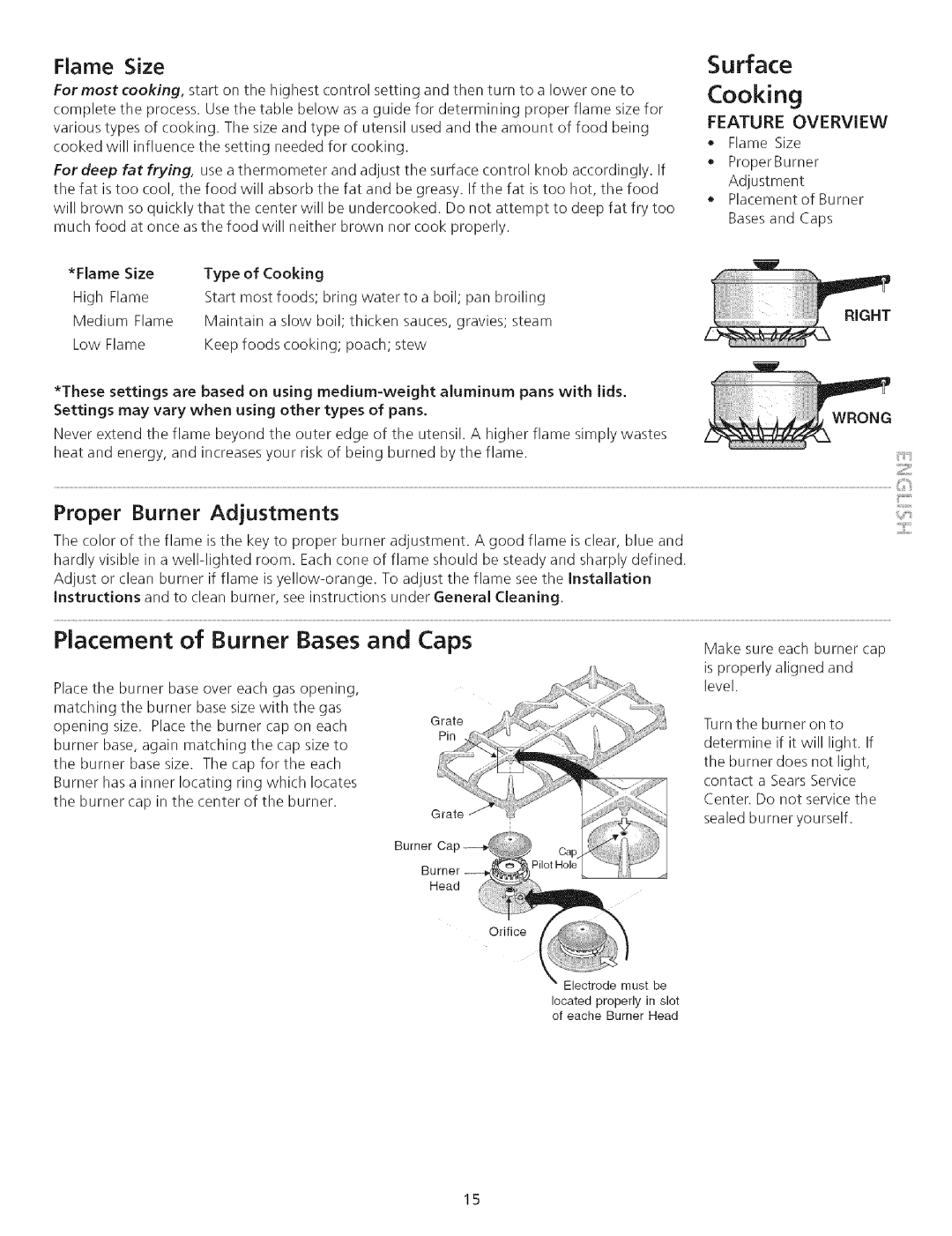
Flame Size
For most cooking, start on the highest control setting and then turn to a lower one to complete the process. Usethe table below as a guide for determining proper flame size for various types of cooking. The size and type of utensil used and the amount of food being cooked will influence the setting needed for cooking.
Fordeep fat frying, use a thermometer and adjust the surface control knob accordingly. If the fat is too cool, the food will absorb the fat and be greasy. If the fat is too hot, the food will brown so quickly that the center will be undercooked. Do not attempt to deep fat fry too much food at once as the food will neither brown nor cook properly.
*Flame | Size | Type of Cooking |
|
|
High Flame | Start most foods; | bring water | to a boil; pan broiling | |
Medium | Flame | Maintain a slow | boil; thicken | sauces, gravies; steam |
Low Flame | Keep foods cooking; poach; stew | |||
*These settings are based on using
Never extend the flame beyond the outer edge of the utensil. A higher flame simply wastes heat and energy, and increases your risk of being burned by the flame.
Surface
Cooking
FEATURE OVERVIEW
•Flame Size
•Proper Burner Adjustment
•Placement of Burner Basesand Caps
w
Proper Burner Adjustments
The color of the flame is the key to proper burner adjustment. A good flame is clear, blue and hardly visible in a
Placement of Burner Bases and Caps
Place the burner base over each gas opening, matching the burner base size with the gas opening size. Place the burner cap on each burner base, again matching the cap size to the burner base size. The cap for the each Burner has a inner locating ring which locates the burner cap in the center of the burner.
Makesure eachburnercap
is properly aligned and level.
Turn the burner on to determine if it will light. If the burner does not light, contact a Sears Service Center. Do not service the sealed burner yourself.
located properly in slot of eache Burner Head
15
